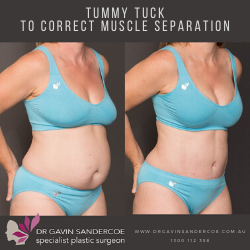Purchasing a home is the biggest financial decision most of us will ever make, so be sure to consider all the factors before you jump in. Buying a home requires thorough research and planning. Also, the experience can be daunting if you’ve never been through it before. Here’s a step by step guide that breaks down each of the components of the purchasing process.
STEP 1 – have your loan pre-approval in place
Knowing how much you have for a deposit and how much you can borrow gives you the confidence to make a calculated offer on your property of choice.
How much can you borrow?
The amount you can borrow depends on what you are buying and how much money you have left once you account for all your fixed commitments from your net income. As a general rule of thumb, you should be paying less than one third of your income on your mortgage repayments. Firstly draw up a weekly budget using a budget planner.
How much deposit will you need?
Most lenders require 5% -10% deposit and a history of savings. If you are borrowing more than 80% of the purchase price you will most likely be required to pay Lenders Mortgage Insurance (LMI), which means an additional fee. The more you can put down as a deposit, the less you will have to borrow, the lower your repayments and the less you have to pay over the lifetime of your loan.
A helping hand from parents
Parents now want to assist their children to help achieve the great Australian dream of home ownership. It is reported that 8 in 10 parents are prepared to lend a hand by providing some form of financial support in an effort to help their children enter the property market.
It’s more than the interest rate
Interest rates are relevant and they are an important factor to consider when deciding which loan is right for you. A higher interest rate can mean thousands of dollars over the life of your loan, so getting a nice low rate is something you need to make certain you do.
However, there are other questions you should ask your mortgage broker or lender to find the loan most suitable for you:
- What types of loans are available?
- What is the interest rate?
- Does it come with an offset account?
- Is it variable or fixed interest rate?
- Can it be split? Remember, some loans can be split into part fixed and part variable.
STEP 2 – choose the right home in the right location
Choosing a property is the fun part! Home buyers can choose what house they want to buy based on their needs, lifestyle and finances.
Research your chosen suburb by checking all advertised listings in newspapers, the internet and real estate agents. Make sure that you know the price of recently sold comparable properties. By visiting open houses and attending auctions you will be more informed of the realistic value of a property. Your mortgage broker may also be able to provide property reports for you.
STEP 3 – make an offer
For properties sold by private treaty (not at auction) you’ll need to make an offer to the listing real estate agent. Obtain a copy of the contract for sale and organise for your conveyancer/legal representative to check it.
Once your offer has been accepted you should immediately provide a copy of contract for sale to your mortgage broker or lender so they can organise property valuation and obtain unconditional (full) loan approval prior to end of cooling off period.
Properties being auctioned are frequently open to offers prior to the auction date. However, if sold at auction you will usually be required to pay a deposit of 10% immediately. The contract for an auctioned property is unconditional and no cooling off period applies. If bidding at an auction, make sure your conveyancer/legal representative has checked the contract and organised pest and building inspections before you bid.
STEP 4 – engaging a conveyancer/legal representative
The real estate agent will provide a copy of the contract for sale which should then be given to your conveyancer for advice and checking. The conveyancer will advise you of your cooling off rights (which varies from state to state). Once the contract has been signed by both parties, the contracts are legally binding. The contract will indicate when the deposit will have to be paid. If no pest and building inspections have been carried out, it is advisable that they are ordered by the conveyancer.
STEP 5 – final loan approval
Your mortgage broker or lender will organise for loan documents for the balance of the purchase price to be prepared and signed by you.
STEP 6 – insurance
Your lender will require you to organise building insurance. It may also be a good time to review your other insurances (i.e. life, disability and income protection) as your personal circumstances will have changed.
STEP 7 – final inspection
Arrange for a full inspection (just prior to settlement date) with the real estate agent. Check for all inclusions in the contract for sale and that they are in working order. Check light switches, power points, air conditioners, exhaust fans, hot water, swimming pool equipment and security system and request copies of all manuals for stove, dishwashers etc.
STEP 8 – settlement
Settlement is generally six weeks after contract exchange and signing, although extended periods can be negotiated with vendor.
Your conveyancer will attend to settlement. This is the day on which the balance of the purchase price is paid to the vendor. Stamp duty and lender’s mortgage insurance (if applicable) will also have to be paid. You can collect the keys from the real estate agent once settlement has been advised.
Now all you need to do is pack your boxes and move in!
As you can see, there’s a lot to consider when purchasing your first home. You need to make sure you have the right professionals helping you along the way. A good Mortgage Broker will guide you through the whole process step by step and make sure everything runs smoothly so you can sit back and enjoy the experience.























